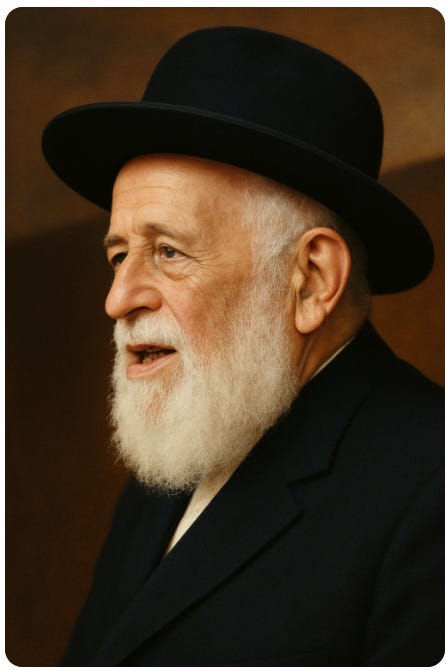One Doesn't Investigate about Libation Wine
There is a strange statement in Yerushalmi Sanhedrin 4:7 that confounds all the commentators. It reads:
הַכֹּל כְּשֵׁירִין לָדוּן דִּינֵי מָמוֹנוֹת. רִבִּי יְהוּדָה אוֹמֵר. אֲפִילוּ מַמְזֵירִין. רִבִּי יְהוּדָה אוֹמֵר. אֵין מְדַקְדְּקִין בְּיַיִן נֶסֶךְ.
“Anybody is qualified to judge money matters.” Rebbi Jehudah says, even bastards. Rebbi Jehudah says, one does not investigate about libation wine.
The problem is that yayin nesech has no relevance to that sugya. Some taste of what commentators say:
Mareh HaPanim begins:
רבי יהודה אומר אין מדקדקין ביין נסך. כמה שיבושים ראיתי ושמעתי בפי' זה והבל יפצה פיהם
Or Shaarei Torat Eretz Yisrael:
אין מדקדקין ביין נסך. — כן העתיק בהגהות מיימוניות בפי"ב ממא"ס ופירש לענין יין נסך של גוים ואינו מובן, ובספר המסלות מסלת שדה כובס הערה י"א כתב דהיינו יין שמנסכין ע"ג המזבח שאפי' עם הארץ נאמן עליו כל השנה (חגיגה פ"ג מ"ד) וגם זה אינו מחוור; ואולי יש להגיה כאן "אין מדקדקין בעדות החדש" וכ"ה ברה"ש פ"ג ה"א בשם ר' יוחנן, ובספר משבי"ח כתב דצ"ל אין מדקדקין בשור הנסקל דכתיב לא תטה משפט כו' והפיסקא שבינתיים מיותר.
They grapple with its meaning, but nothing is really satisfying.
I saw this many years ago from Rabbi Reuven Margolios, but can’t track it down right now. Presumably it is in his work on Sanhedrin.

His brilliant claim is that yayin nesech does not mean yayin nesech, that is libated wine. Rather, it is יי”ן נ”סך, a mnemonic of six cases in which we are not medakdekin, so insistent or stringent. He identifies what each of the six cases are, and in a way (IIRC) that would fit into the context.
Further, he associates it with the personality of the one who said it. Rabbi Yehuda is one who likes this type of mnemonic. For instance, in the Haggadah, רבי יהודה היה נותן בהם סימנים: דצ"ך עד"ש באח"ב.
This has to do with today’s daf yomi, Avodah Zarah 39a, because both Rav and Shmuel work with such acronyms:
אָמַר רַב: חבי״ת אָסוּר בְּחוֹתָם אֶחָד, חמפ״ג מוּתָּר בְּחוֹתָם אֶחָד. חָלָב, בָּשָׂר, יַיִן, תְּכֵלֶת.
§ Rav says: The substances represented by the acronym ḥet, beit, yod, tav are prohibited if they were deposited with a gentile while they were sealed with only one seal. Those represented by the acronym ḥet, beit, peh, gimmel are permitted if they were deposited with a gentile while they were sealed with one seal. The Gemara elaborates: Milk [ḥalav], meat [basar], wine [yayin], and sky-blue dye [tekhelet]
אֲסוּרִין בְּחוֹתָם אֶחָד. חִילְתִּית, מוּרְיָיס, פַּת, גְּבִינָה — מוּתָּרִין בְּחוֹתָם אֶחָד.
are all prohibited when they are found with only one seal; ḥiltit, fish stew [morayes], bread [pat], and cheese [gevina] are all permitted when they are found with one seal.
וּשְׁמוּאֵל אוֹמֵר: בי״ת אָסוּר בְּחוֹתָם אֶחָד, מח״ג מוּתָּר בְּחוֹתָם אֶחָד. בָּשָׂר, יַיִן, תְּכֵלֶת אֲסוּרִין בְּחוֹתָם אֶחָד; מוּרְיָיס, חִילְתִּית, גְּבִינָה מוּתָּרִין בְּחוֹתָם אֶחָד. לִשְׁמוּאֵל, חֲתִיכַת דָּג שֶׁאֵין בָּהּ סִימָן הַיְינוּ בָּשָׂר, תְּרֵי גַּוְונֵי בָּשָׂר לָא אָמְרִינַן.
The Gemara cites a different set of lists than that presented by Rav. And Shmuel says: The substances represented by the acronym beit, yod, tav are prohibited when sealed with one seal; those represented by the acronym mem, ḥet, gimmel, are permitted when sealed with one seal. The Gemara explains: Meat [basar], wine [yayin], and sky-blue dye [tekhelet] are prohibited when sealed with a single seal; fish stew [morayes], ḥiltit, and cheese [gevina], are permitted when sealed with a single seal. The Gemara comments: According to Shmuel, a piece of fish that has no sign of kashrut is the same as meat, and we do not say that there is a difference between two categories of meat. Consequently, he does not include in his list a piece of fish that has no sign of kashrut.
A braya follows with אֵין לוֹקְחִין ימ״ח מח״ג בְּסוּרְיָא.
Some of these are made up words, but others like chavit and bayit are real words. I guess real words make for better mnemonics. But there is a big downside. Consider that the daf from a week ago Shabbos, namely Avodah Zarah 31a, discussed the case of a chavit, a literal barrel, and whether it needed a single or double seal.
הֵיכִי דָּמֵי חוֹתָם בְּתוֹךְ חוֹתָם? אָמַר רָבָא: אַגָּנָא דְּפוּמָּא דְּחָבִיתָא שְׁרִיקָא וַחֲתִימָא — הָוֵי חוֹתָם בְּתוֹךְ חוֹתָם, וְאִי לָא — לָא. דִּיקּוּלָא וּמִיהַדַּק — הָוֵי חוֹתָם בְּתוֹךְ חוֹתָם, לָא מִיהַדַּק — לָא הָוֵי חוֹתָם בְּתוֹךְ חוֹתָם. נוֹד בְּדִיסַקַּיָּא, חֲתִימַת פִּיו לְמַטָּה — הָוֵי חוֹתָם בְּתוֹךְ חוֹתָם, פִּיו לְמַעְלָה — לָא הָוֵי חוֹתָם בְּתוֹךְ חוֹתָם, וְכִי כַּיִיף פּוּמֵּיהּ לְגָיו וְצַיִיר וַחֲתִים — הָוֵי חוֹתָם בְּתוֹךְ חוֹתָם.
The Gemara asks: What is a seal within a seal like? Rava says: A basin placed over the mouth of a barrel that is smeared with clay and stamped with a seal is considered a seal within a seal. And if not, it is not considered a seal within a seal. If a basket is placed over a barrel and is fastened to it, this is a seal within a seal; if it is not fastened to the barrel, it is not a seal within a seal. With regard to a wineskin that is placed in a sack [disakaya], if the wineskin’s stopper is facing downward, this is a seal within a seal; if its stopper is facing upward, this is not a seal within a seal. And if he bends the wineskin’s bottleneck inward and ties the sack and seals it, this is also considered a seal within a seal.
(And see the Tosafot there about how we rule across Shas about this)
But consider how confusing this is. Do we need a double seal on a barrel (of say, wine)? And here is Rav saying that we need a double-seal on a chavit, barrel.




